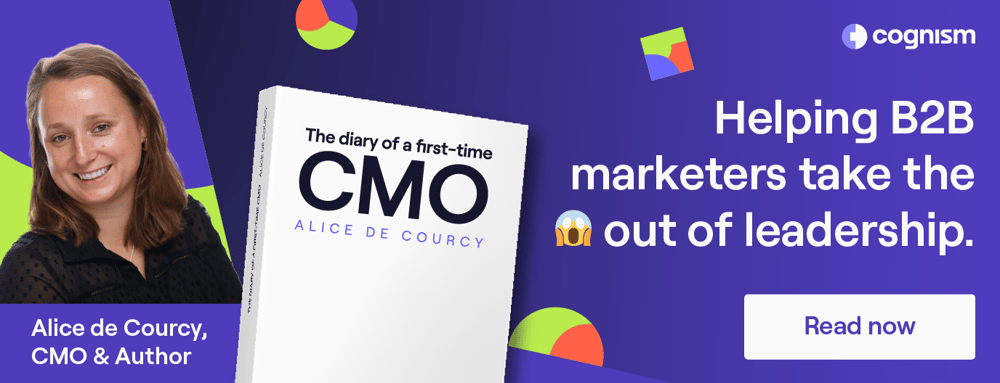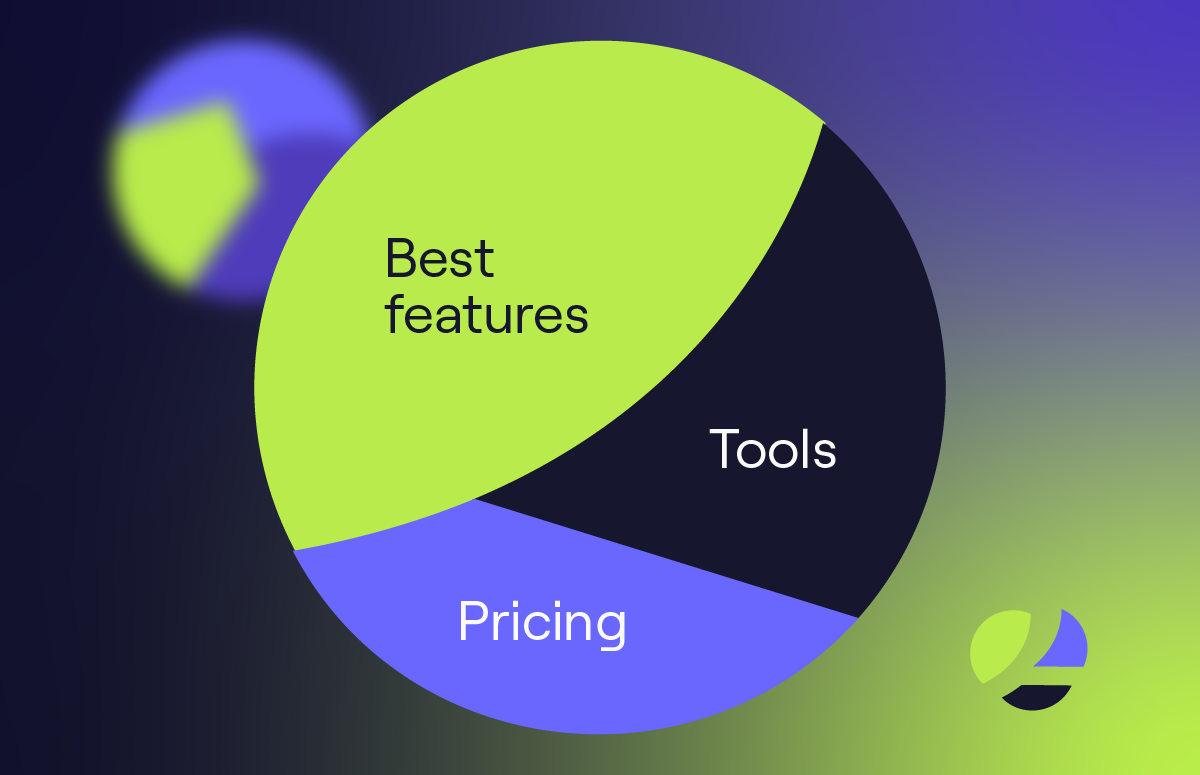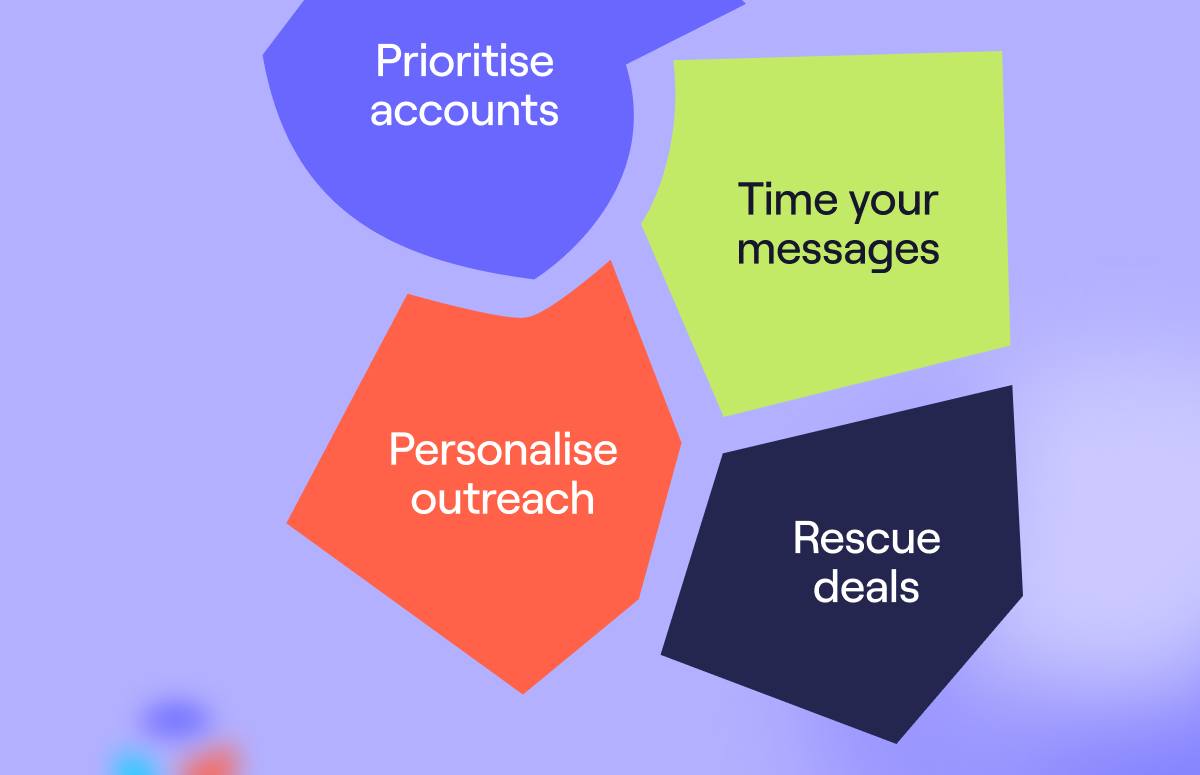The Ultimate Marketing Team Structure Explained + Tips
How can you prioritise who to hire next and create the right marketing team structure?
The answer:
There’s no ‘one size fits all’ solution. Every SaaS marketing team is different, just as every company’s goals are different.
Needs change with business growth, so it’s time to challenge the old-school idea of requiring a rigid set of job titles in each marketing team.
This article explains the key points for structuring a winning marketing team and how to fill critical roles.
Let’s go 👇
How are marketing teams organised?
Marketing team organisation depends strongly on the size of a company, industry, and marketing goals.
A B2B marketing team structure in a corporation would differ from the one in a growing startup. However, most teams close the following roles as they hit their next revenue targets:
- Chief Marketing Officer (CMO) - the highest position in the marketing team. The CMO leads the team and is in charge of overseeing all marketing activities across a company. They decide the direction and strategy for the brand.
- Head of Marketing or Director — sets overall marketing trajectory, creates a marketing strategy, supervises execution, and analyses the effectiveness of all activities affecting goals.
- Marketing Coordinators or Managers — often wear many hats and are responsible for campaign execution or specific activities such as content creation.
- Demand Generation Specialist — develops and executes campaigns to bring qualified leads and clients into the funnel. Decides on outreach strategies for different prospect segments.
- Graphic Designers — support the entire marketing team with visual assets required for campaign execution, social media content and more.
- Content Writers — write blog posts per SEO requirements, and create copy for social media, landing pages and white papers.
- Product Marketing Manager — examine target audience, product positioning and work closely with sales and product teams.
- Customer Marketing - they improve the customer experience to retain and grow pipeline via campaigns such as email marketing.
- Performance Marketing - owns online campaigns across channels so leads can enter the funnel faster.
- Event Manager — plans and conducts events to nurture potential customers, raise awareness about the brand and maintain relations with existing customers.
How many people are on a marketing team?
Depending on the company size and growth stage, marketing goals, and industry, the size of a marketing team can vary.
Cognism CMO Alice de Courcy says:
“Beyond expanding your team, it’s about finding the channels that work for you and adjusting your strategy.”
Big corporations can have over 3,000 people on board their marketing departments. SMBs can hire a one-person band team to oversee all initiatives and channels.
As companies enter a new growth stage, they can decide to scale their marketing activities and start building a team with a Chief Marketing Officer, like Alice, with other heads of department on board.
Cross-functional marketing teams typically consist of a CMO, heads of marketing (different departments), and marketing specialists (or managers).
So how do you decide on your ideal marketing team structure?
It’s best to analyse signals from various marketing activities — if you see some ROI from a marketing channel such as cloud marketing, consider bringing in a marketer who can scale it for more revenue. However, it also means you must cut the roles that don’t get bang for the buck you bring in.
For example, through data analysis, Cognism identified functions within our marketing team that no longer worked after a shift in strategy. We adjusted some roles, introduced some new ones and implemented a better process through data analysis.
For example, the PR role, in-house and through agencies, wasn’t doing enough for us.
Alice explains:
“We found that events created a great feel-good factor, but CPAs were high, time and opportunity costs around sponsored events were even higher, and we could scale other lead sources for our business.”
“We didn’t get the bang for our buck we were looking for with a PR role - and beyond funding announcements, we saw little traction.”
How was this solved? 🤔
By drilling into the data and doubling down on content marketing instead! This channel has been hugely successful at Cognism.
The different marketing departments explained
As your organisation grows, you should change up your marketing department structure. Add roles and expand individual departments. Here are the most important ones you should focus on when building a marketing team:
- Product marketing department — product marketers define a product’s value proposition, understand buyers and the competitive landscape, and work closely with other departments. Your product marketing team structure will grow as your organisation offers more products to diverse audiences.
- Content marketing department — the content team optimises content for search engine rankings and increases revenue from organic channels. You must hire more content creators and writers to develop successful conversion strategies.
- Marketing operations department — this role is crucial when you have a lot of campaigns running simultaneously and need more people to be involved in launching them. The marketing operations team works with CMS and analytics and coordinates the plan with other departments to get large-scale campaigns to run smoothly and on schedule.
- Demand generation team — builds go-to-market strategies, chooses target accounts for outreach and defines approaches to using content for generating more hot leads that turn into revenue.
The roles and responsibilities that make up a marketing team
A marketing team typically consists of various roles and responsibilities that work together to create and execute marketing strategies, promote products or services, and achieve business objectives.
Here are some common roles and their respective responsibilities when creating an in-house marketing team structure:
1. Marketing director
Marketing Directors are captains steering a ship — they set the overall direction, vision and mission, coordinate the team and support its morale, and help handle various marketing challenges and crises.
The core responsibilities of a marketing director are:
- Develop overall marketing strategies and plans: create comprehensive marketing strategies that align with the company’s business objectives, analyse trends, talk to customers to collect new market insights, and keep track of competitors’ strategies.
- Coordinate and lead the marketing team: oversee and manage the marketing team, ensuring that all members understand their roles and responsibilities, create career paths and contribute to the team members’ professional growth.
- Monitor and report on performance: monitor the performance of marketing activities and campaigns; set key performance indicators (KPIs) to measure the success and impact of marketing efforts; analyse data and metrics; and assess the return on investment (ROI) of various marketing initiatives.
- Budget management: set and manage the marketing budget and allocate funds to different marketing channels, campaigns, and projects.
- Collaboration with other departments: collaborate with other departments, such as sales, product development, and customer support, to ensure marketing activities align with the overall business strategy.
2. Marketing strategist
Marketing Strategists are extremely numbers-driven — they look for data to back up their decisions before campaigning.
Core responsibilities include:
- Conduct market research and analysis: study target audiences and market trends, uncovering valuable consumer insights and emerging market patterns.
- Develop marketing strategies: forge solid foundations for strategies based on market insights.
- Create marketing plans and campaigns: tailor comprehensive marketing blueprints and outline campaigns.
3. Digital marketing specialist
The digital marketing team structure wouldn’t go far without a Digital Marketing Specialist. They often wear many hats and are involved in various stages of campaign planning and execution.
Their core responsibilities are:
- Manage online marketing channels: utilise SEO, PPC, email marketing, and social media, and optimise each channel’s potential to ensure maximum reach, engagement, and conversion.
- Optimise digital campaigns: fine-tune digital campaigns and optimise performance.
- Analyse data and metrics: set campaign KPIs and supervise the success of marketing initiatives by analysing marketing data.
4. Paid media manager
The best marketing team structure includes a paid media manager. They help reach target accounts when prospects are actively looking for a solution. Paid media managers can create persuasive ads that convert traffic into high-potential leads.
Core responsibilities:
- Choose the right targeting — understand how to reach target audiences with ads in the most efficient (and budget-wise) way.
- Manage advertisement budget — allocate budget to paid channels for the maximum outcome.
- Create engagement ads — create and test different copy that drives signups and sales.
- Find new campaign opportunities — find new keyword opportunities and broaden campaign reach.
Paid media is a full-time job if you want to keep your channels optimised and run some experiments. As Alice says:
“If you’ve got the right person, keep it in-house.”
Having your paid manager in-house is a fantastic resource - you’ll soon see the results.
5. Content marketing specialist
A content marketing team structure requires several content specialists, from SEOs to copywriters. Content marketing specialists curate blog and landing page copy to engage audiences and get them to convert into paying customers.
Their core responsibilities are:
- Develop and execute content marketing strategies: create engaging content that helps core audiences to solve challenges with the company’s products.
- Align with SEO on content optimisation: work closely with SEO specialists to create SEO-optimised content that ranks well on Google.
- Use content to attract and nurture leads: cover topics that attract high-potential leads, educate them on product capabilities and drive action using convincing calls to action.
6. Social media manager
Social media managers engage target audiences through various social media channels. It’s not only about the content they create but how well it gets the audience to interact and convert.
Core responsibilities:
- Manage and curate content: navigate various lead source channels and curate content that resonates with the audience.
- Engage with followers and respond to inquiries: respond to comments that followers ask in an engaging way to foster a connection.
- Monitor social media trends and analyse performance: monitor social media KPIs and ensure social media presence contributes to the company’s overall growth.
7. Graphic designer
While there are many tools for easy graphics creation, your organisation will always benefit from professional graphic designers. They’ll make top-notch unique graphics that your prospects (and competition) will admire.
The core responsibilities of graphic designers are:
- Design visual assets for marketing campaigns: create visuals that captivate the audience — graphics, banners, advertisements, and social media post visuals.
- Ensure brand consistency across all marketing materials: ensure all visual materials align with corporate identity brand books and are professional.
8. Market research analyst
Market research analysts scour the web for new trends and insights on market trends, target audiences, and advertisement opportunities.
Their core responsibilities are:
- Conduct market research: gather insights to understand consumer preferences and behaviour.
- Analyse competitor data and industry trends: monitor competitors’ campaigns and overall strategy, identify patterns, and build insights.
- Provide insights to guide marketing strategies: work closely with the rest of the team to deliver insights to help improve the product and marketing strategy.
9. Product marketing manager
Every SaaS marketing team structure needs product marketing managers. They understand your product’s positioning and strengths and how it stands among other competitive offers. If given a minute to sell your product, they’d find the best narrative to do it immediately.
Core responsibilities:
- Develop product positioning and messaging: work on product pages that show products’ strengths, communicate benefits to customers, and reach the right audience.
- Marketing new features: collaborate with a product team to plan new feature promotions and reach more people with product updates.
- Support sales team with product communication: educate the sales team on product communication, explain strengths and features, and build an audience-specific narrative around the product.
Tips for building a marketing team
Hiring is one of the most crucial skills of a marketing leader. You can’t scale revenue if you don’t hire more people to form your marketing team structure. Here are some tips for finding the right people to join your marketing team:
1. Focus on positive signals
You should base your decision to hire for a new role on positive signals. These could be first wins with your paid campaigns or a consistent influx of high-value prospects reading your blog. If you see revenue flowing from specific channels, capitalise on it and hire a dedicated professional to take that channel to a new level by scaling it.
2. Don’t overhire
A big team that can’t generate revenue higher than marketing spend can quickly become a candidate for aggressive headcount cuts. Instead of focusing on increasing the size of the team, focus on quality and don’t rush with hiring. Bring in the best people who can move the ROI needle.
3. Get measurement right
Set the right KPIs for success with a new hire, monitor the progress once new campaigns are unrolled, and run regular performance reviews and 1-2-1s (e.g., bi-weekly) to understand what blocks new hires from achieving more success. Make sure you can understand the impact each marketing role has on revenue.
4. Know where to outsource
There are some areas in marketing that you can (and should!) outsource. Innovation is one of them — you won’t always be able to afford to hire the most top-notch experts full-time, but you can still use their unique knowledge on a consultancy basis. Choose the ones that have experience with the challenges of the growth stage your organisation is in now.
For more tips on how to structure a marketing team, watch this video 👇
Build the best marketing team with tips from Cognism
Discover how Alice changed Cognism’s marketing team structure and strategy for the best success.
Click to read the diary of a first-time CMO 👇



